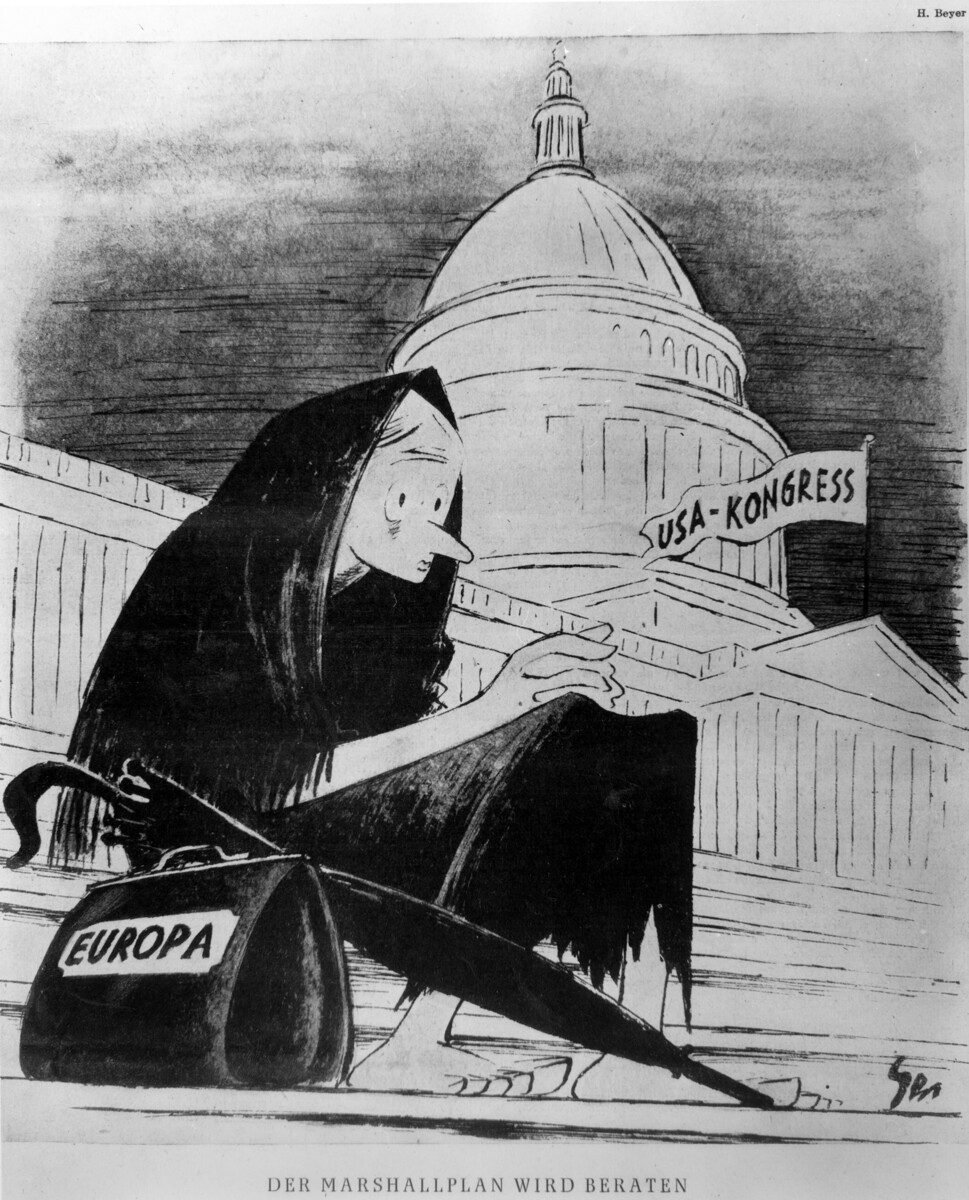Abstract
On June 5, 1947, as part of the American political strategy of
containment vis-à-vis the Soviet Union, U.S. Secretary of State George
C. Marshall delivered a speech at Harvard University in which he offered
the countries of Europe an economic aid program to rebuild their
national economies. Because the program did not yet have an official
name, the press called it the Marshall Plan. On April 3, 1948, President
Truman signed the Economic Cooperation Act, putting the European
Recovery Program (ERP) – as the Marshall Plan was now officially called
– into motion. The plan provided for approximately thirteen billion
dollars in aid.
This caricature from Der Simpl, a
satirical newspaper published in the American occupation zone, appeared
in February 1948, two months before Truman signed the Economic
Cooperation Act. Drawn by H. Beyer, the image shows “Europe” in the form
of an impoverished, emaciated (and presumably widowed) woman in tattered
black clothes. With a small bag, no shoes, and nothing more than an
umbrella for protection, she sits on steps of the U.S. Capitol, where
Congress is apparently in session. The caption at the bottom reads: “The
Marshall Plan is being discussed.”
